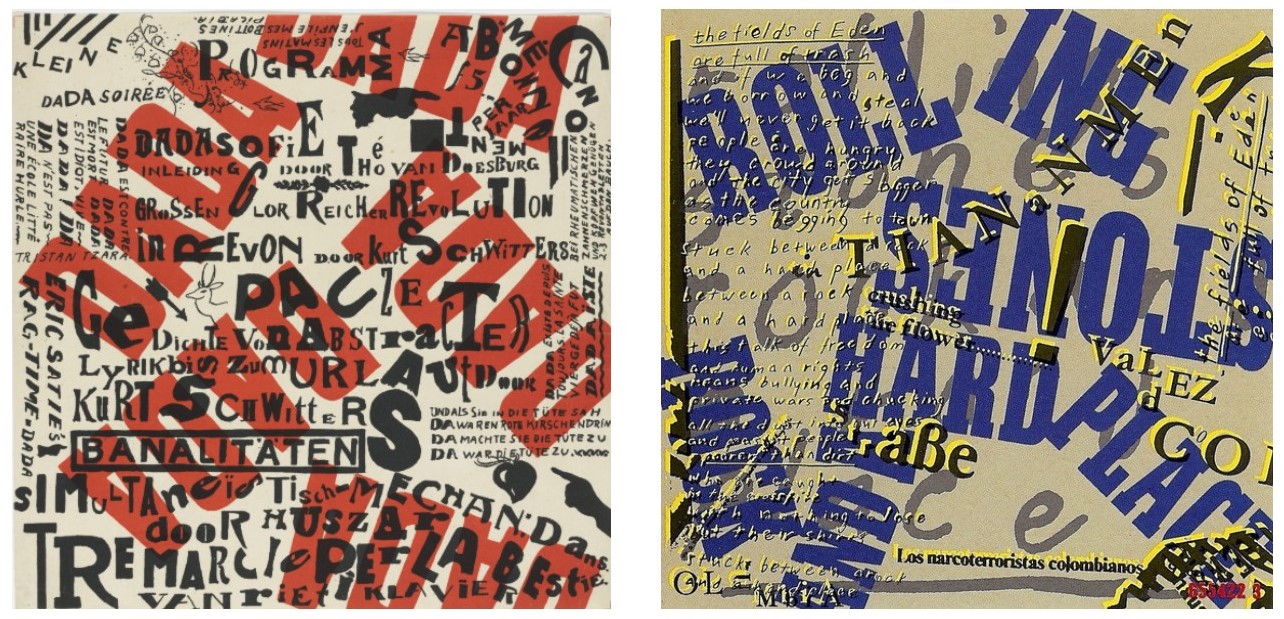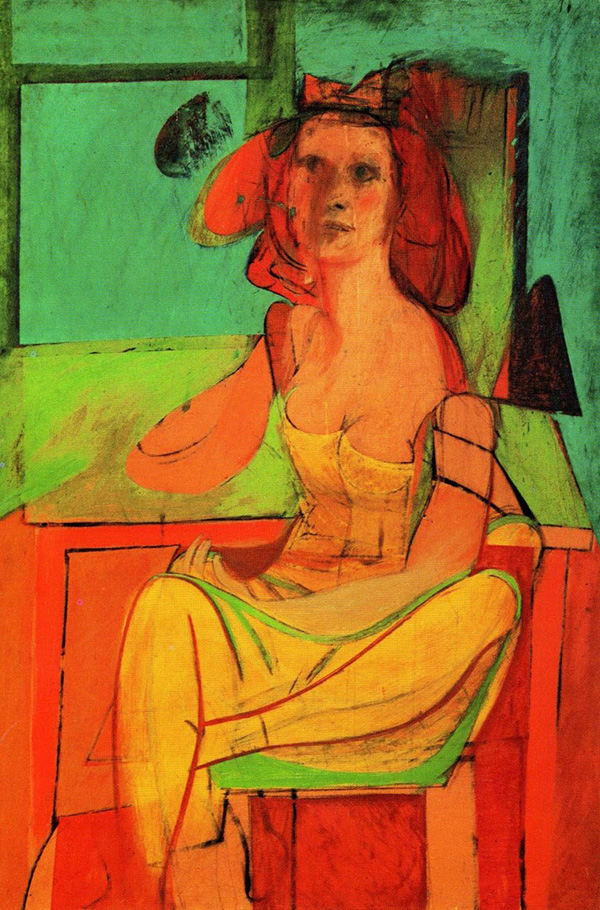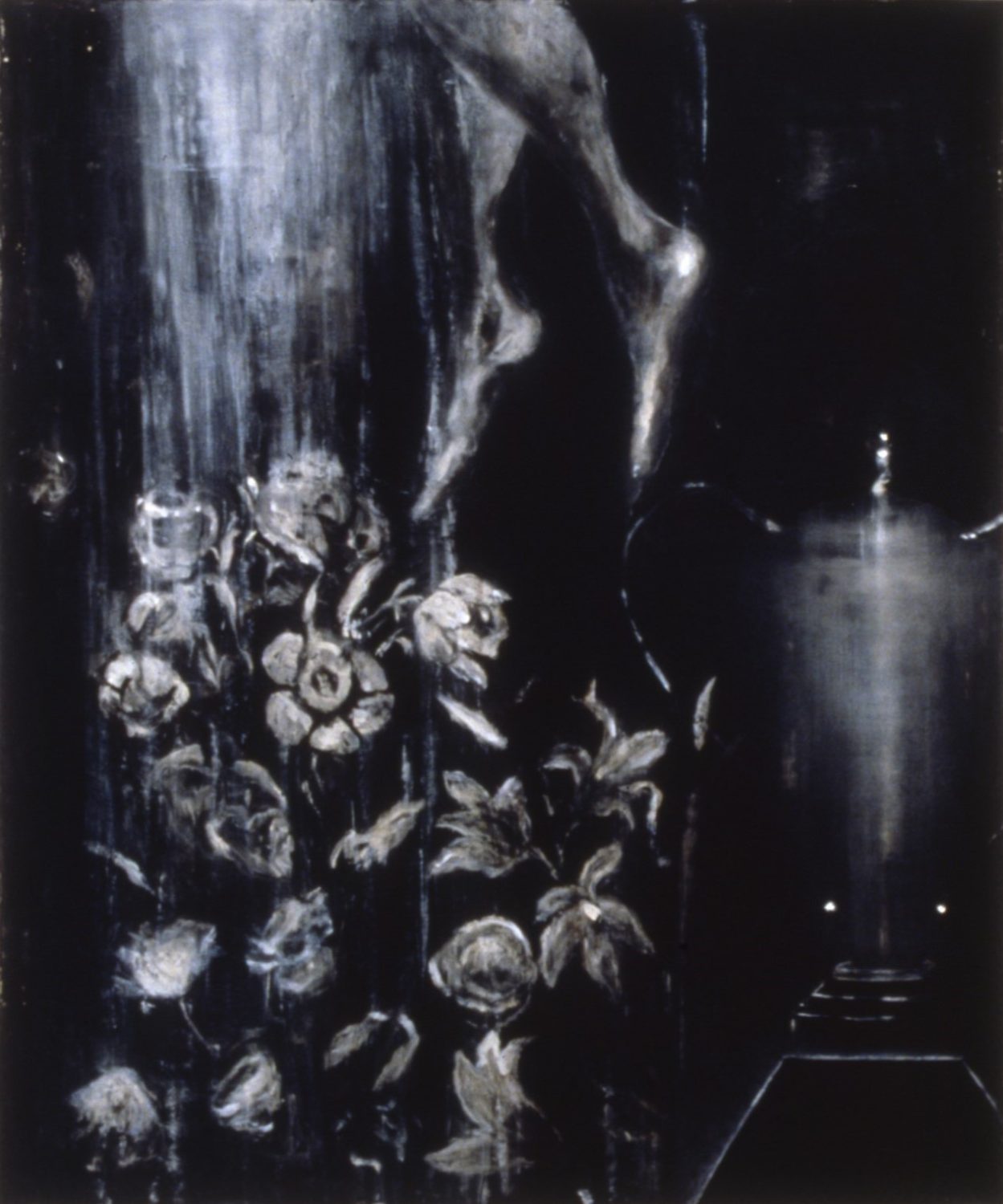Sometimes, one comes to know and appreciate something in a roundabout manner. No bolt from the blue, no epiphany that life and the world will never be seen in quite the same way again, but rather a slow realization over time that this could be important.
As a teen, I became a fan of “non-musician” Brian Eno, who was a member of Roxy Music and had worked with David Bowie. Like them, Eno made arty records and had a postmodern approach to rock and roll. His song “Kurt’s Rejoinder”1 features a recording, home-taped by Eno from a BBC Radio Three programme, of painter/collagist/sculptor/designer/writer Kurt Schwitters performing a sound poem. Eno didn’t use the recording as the vocal for the song, but more as a textural element; it sounds like some unknown, mysterious instrument in the distance. The liner notes credit Schwitters with “Voice (from the Ur Sonata).” Eno’s lyrics to the song gave me no clue as to Schwitters’ work – or to anything else about him, for that matter, including to what he was supposedly responding. I didn’t know much about Schwitters, although somehow, I was aware he was associated with Dada. Never mind I really didn’t know what Dada was.2
In 1986, by which time I had become familiar with Schwitters’ work, the Brian Eno/Russell Mills collaborative book More Dark than Shark3 was published. It contains the lyrics of all the songs from Eno’s initial four rock albums, and a corresponding piece of artwork by Mills. I purchased my copy very soon after it came out, for the work of both contributors. Mills’ interpretation of “Kurt’s Rejoinder” contains what he called “semi-Schwitters collages” – his imitations of Schwitters’ work – and his commentary on the piece includes a short summary of the sad trajectory of Schwitters’ career.
In the following years, I learned little details about Schwitters’ life – he was born in Germany in 1887 and studied art at the Dresden Academy. When the National Socialist cretins came to power he was branded a “degenerate artist” and his books were burned. In 1937 he fled to Norway and, when that country was overrun, to England. By 1948, in dire financial straits, he had been trying to sell his collages for £1 a piece. He died that year, one day after being granted British citizenship and less than two weeks before the opening of his first solo exhibition in the US. I’m not sure if his work was Dada, but his life certainly was.4
I’m most interested in Schwitters’ collages, the work for which he is now most celebrated. He collected rubbish from the street to make them, and they often don’t contain “imagery” but consist of texture, both actual and visual; shape; and color. Text is frequently employed, generally as a compositional device rather than for the actual meaning of the words. To create a more cohesive surface, he regularly utilized paint on the collages, and used a flour and water mixture not only as paste, but to mute any color that was too vivid. Although Schwitters sometimes incorporated faces and figures in the work, I prefer the pieces without such representational aspects. His employment of modern-world detritus such as bus tickets, newspaper clippings, shipping labels, and candy wrappers anticipated the work of Robert Rauschenberg, and as far as I’m concerned, was more revolutionary than Picasso’s use of collage, which was illustrative in nature.5
I have a preference for the pieces with a grid-like structure. I find these, especially, to be quite elegant, despite the lowly origins of the materials used. Schwitters’ subtle use of color, along with the relatively small scale of the work and his eye for harmonious composition, gives his oeuvre this intimate, poetic quality, while he called attention to the mass-produced, the everyday, the ignored.6
Several years ago, I purchased a used copy of the catalogue Kurt Schwitters: Color and Collage.7 I’d had it a few days when I noticed on the copyright page the exhibition had come to the Berkeley Art Museum in 2011. I hadn’t been aware the show had been less than eighty miles away, and I missed the chance to see all the actual work that I had been poring over in reproduction. I was crushed, as I imagined it would be quite some time before I would again have the opportunity to see a large selection of Schwitters’ work. I’m still waiting.
Postscript: Although over forty-five years after its release, “Kurt’s Rejoinder” remains one of only two rock songs I’ve heard with a title that cites Schwitters,8 I do know of another reference to him in the genre – the sleeve for The Rolling Stones 1989 single “Rock and a Hard Place” is based on a Schwitters piece.
1 From Before and After Science (Island Records, 1977), the fourth of Eno’s solo rock albums; it was his last record to be comprised of songs until Wrong Way Up, which he made with John Cale in 1990.
2 Mainly I was familiar with the term because both Robert Rauschenberg and Jasper Johns were often referred to as “Neo-Dada.” In the wake of World War I, the Dadaists created absurd “anti-art” and rallied against the circumstances in which mankind had put itself, those which resulted in more than ten million casualties. Maybe if I’d known more about the movement, Eno’s lyrics would have made more “sense” to me.
3 Faber and Faber. I learned about this book via the liner notes of the companion compilation LP, More Blank than Frank (EG Records, 1986) – “Please send check for US $25.00 + $2.00 postage and handling to…,” which I did. The title of the album is derived from Eno’s song “Blank Frank,” which doesn’t appear on the record. The title of the book, according to its acknowledgements page, was “kindly and unwittingly supplied” by one Mike Clark.
4 As was his death – he was buried in an unmarked grave in England, but in 1970 his remains were disinterred and re-buried in Germany, where he had vowed, because of Nazi atrocities, never to return.
5 Bring on the arguments.
6 Several decades later, the Pop artists would employ this idea in an exeedingly different manner.
7 Yale University Press, 2010.
8 The other one being Jim Carroll’s “I am Not Kurt Schwitters,” from the album Pools of Mercury (Mercury Records, 1998).























